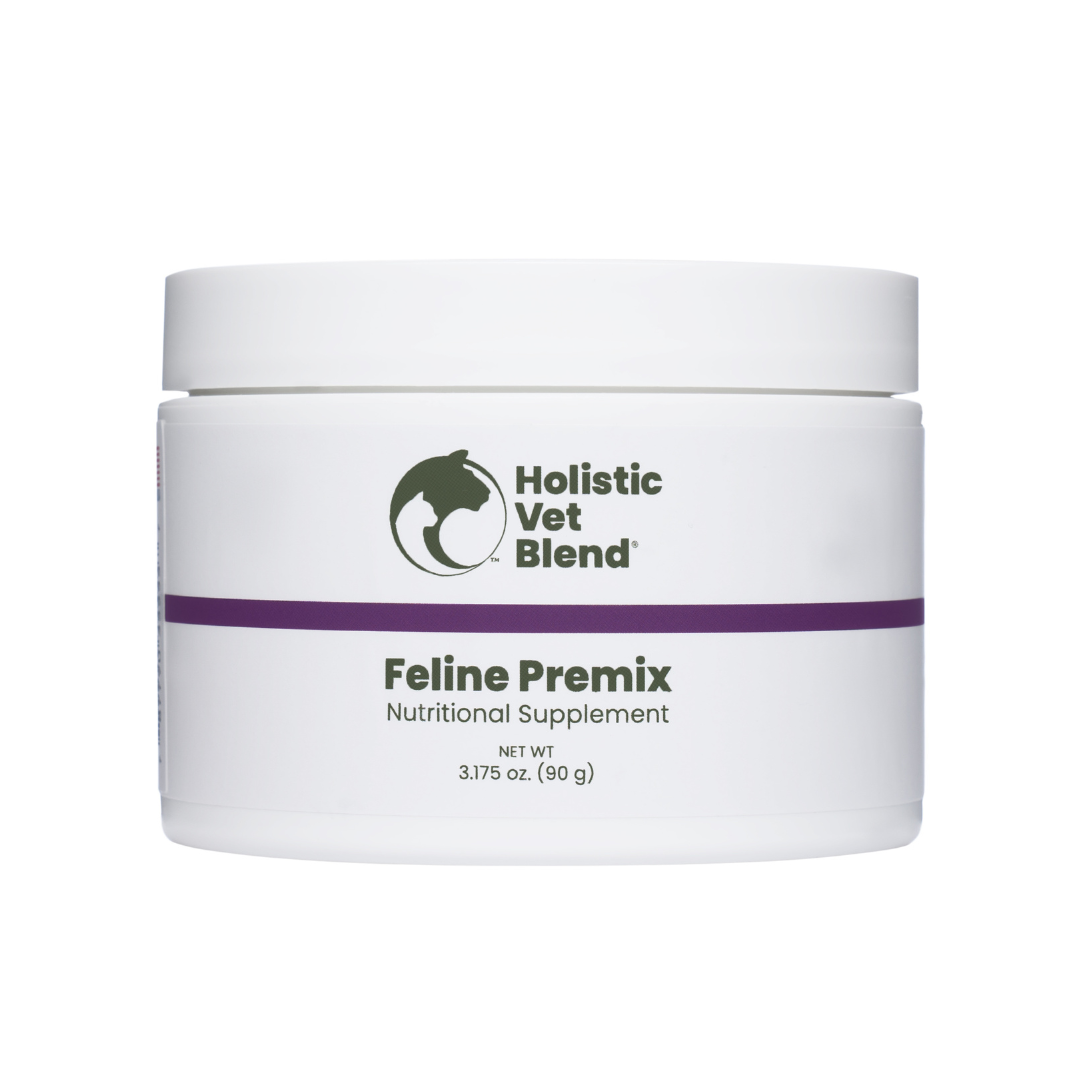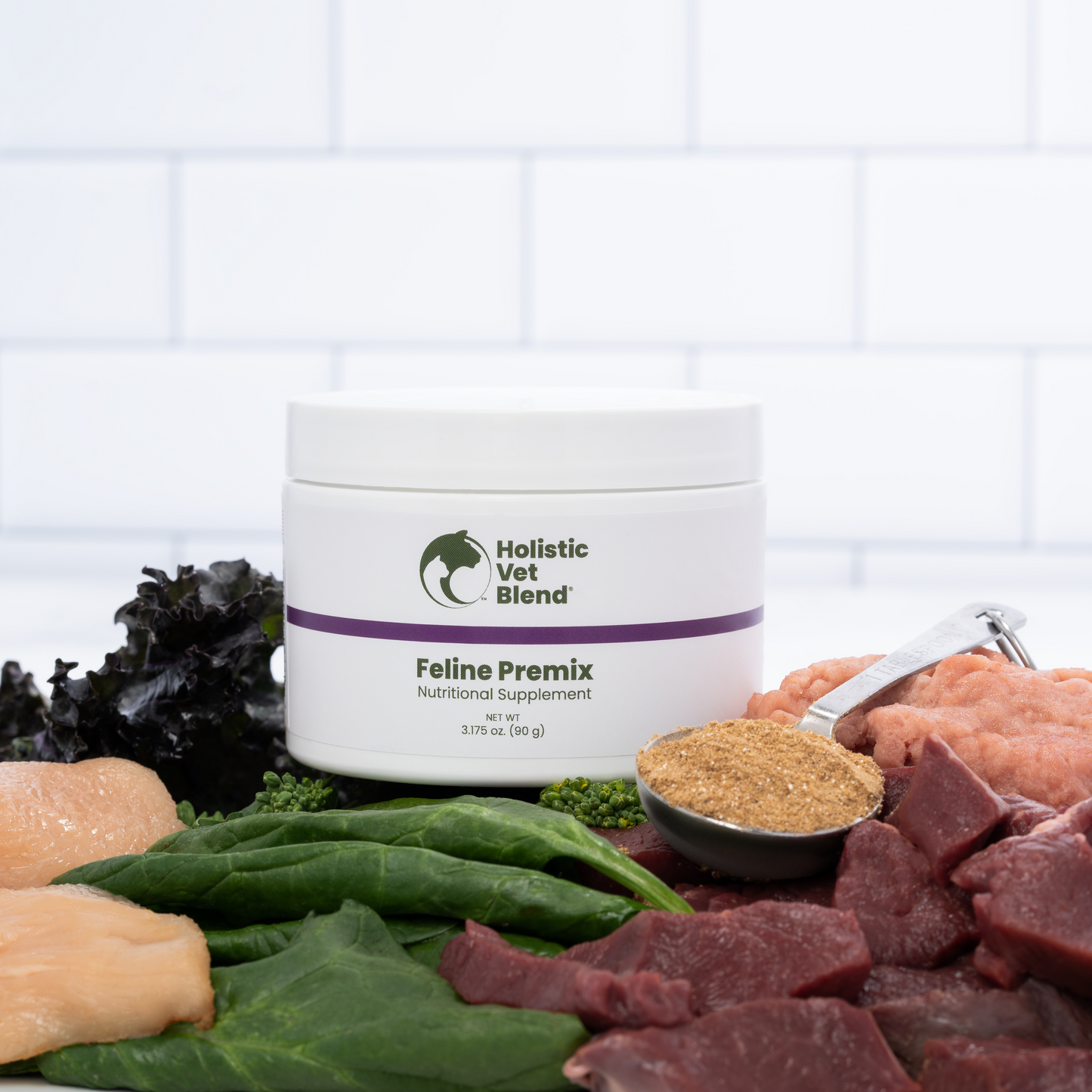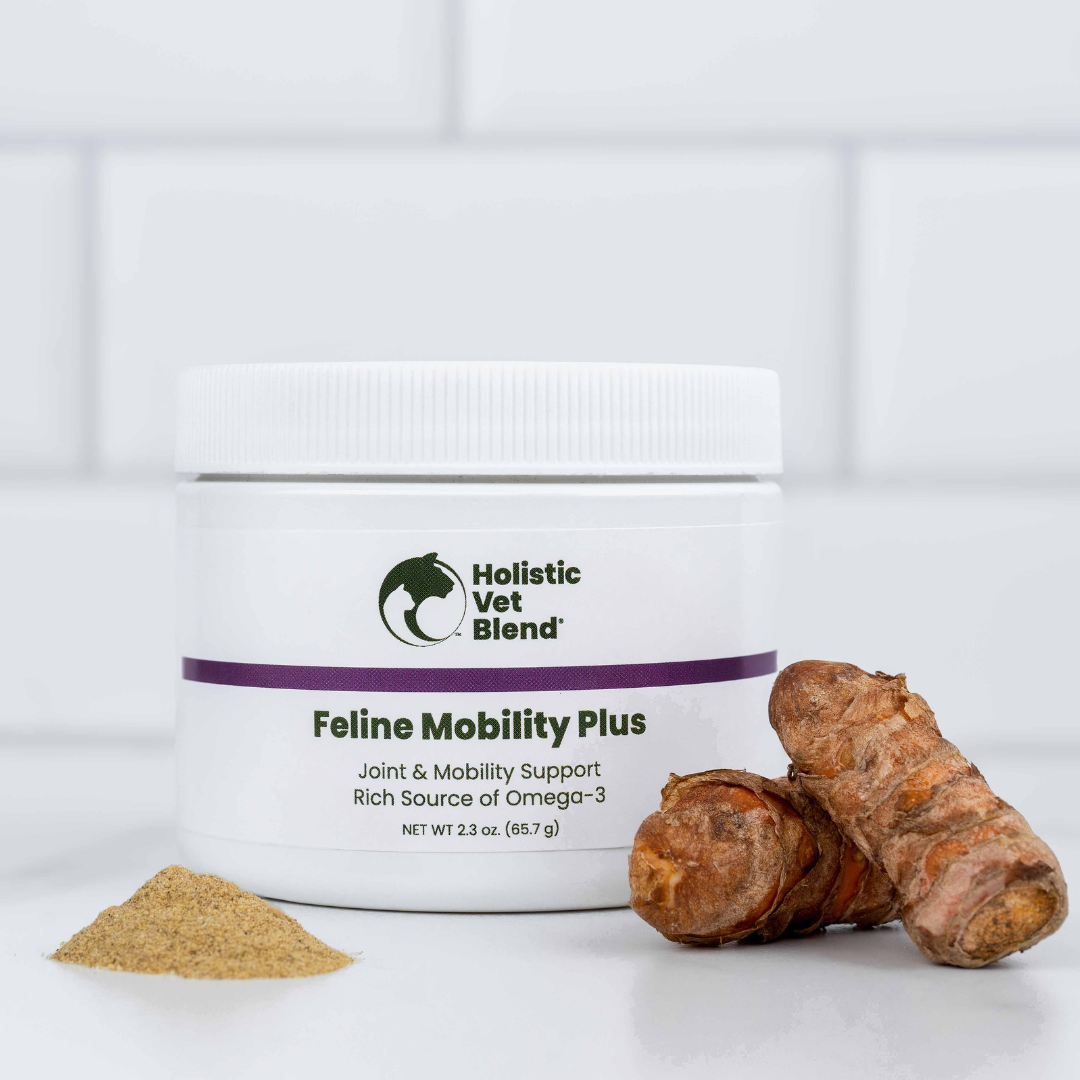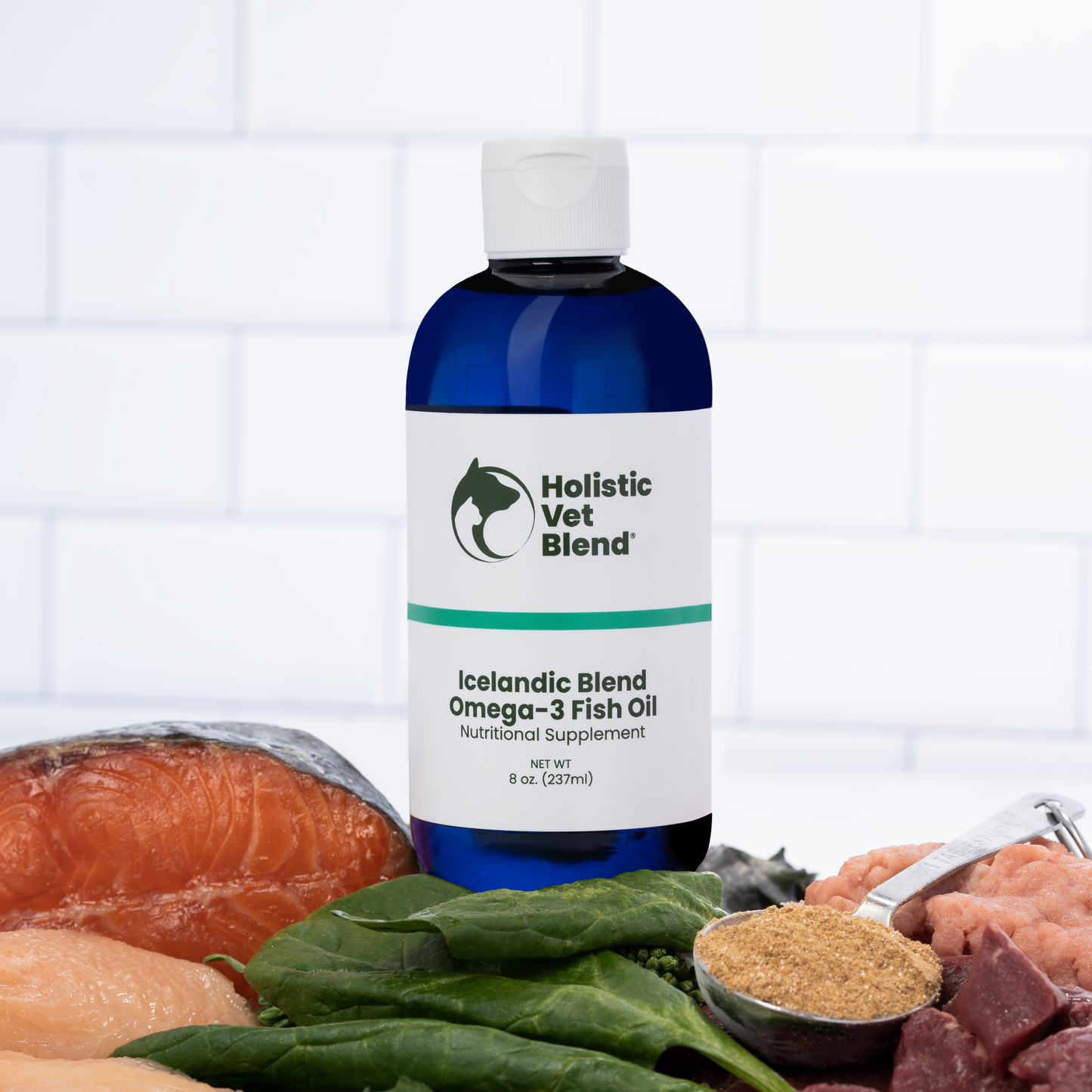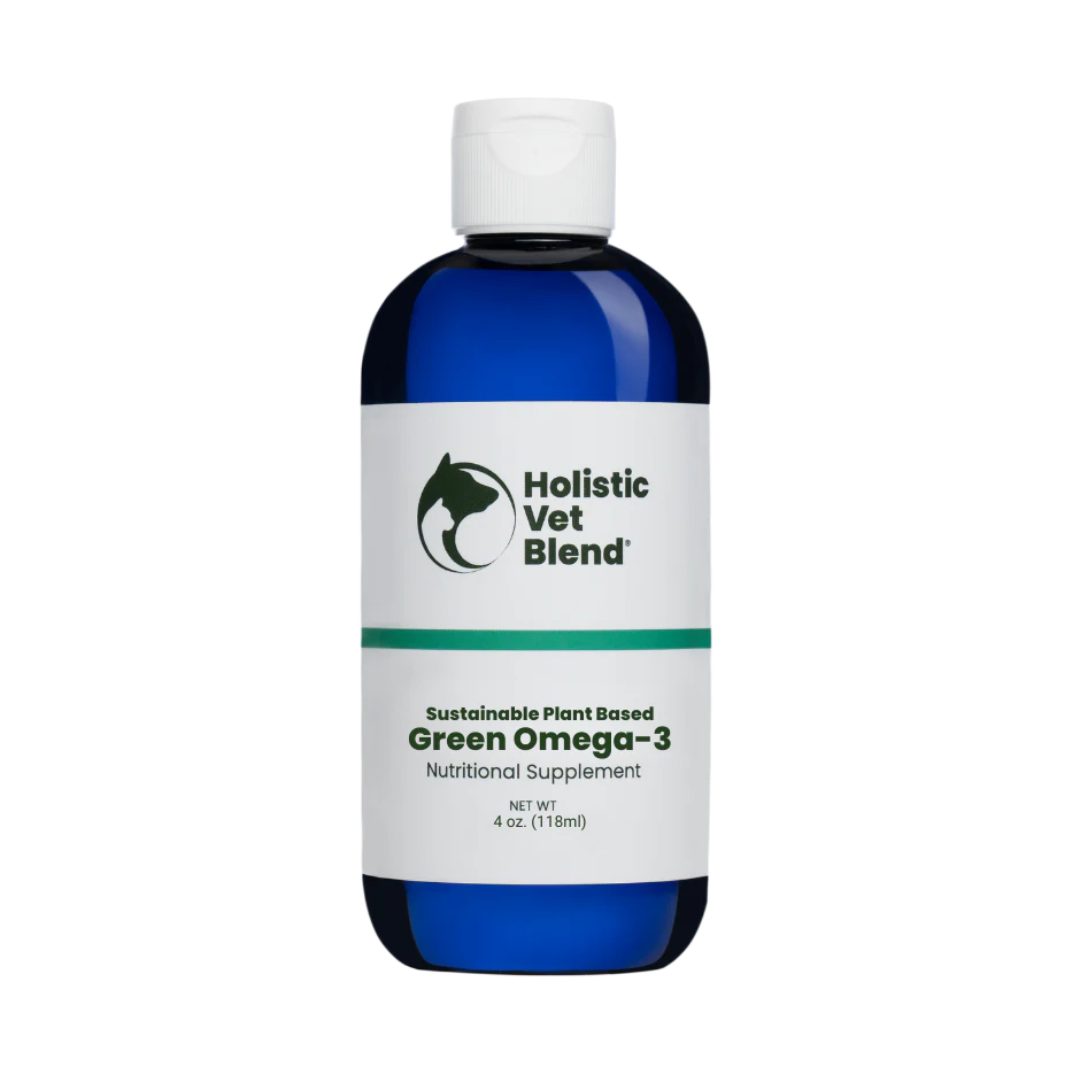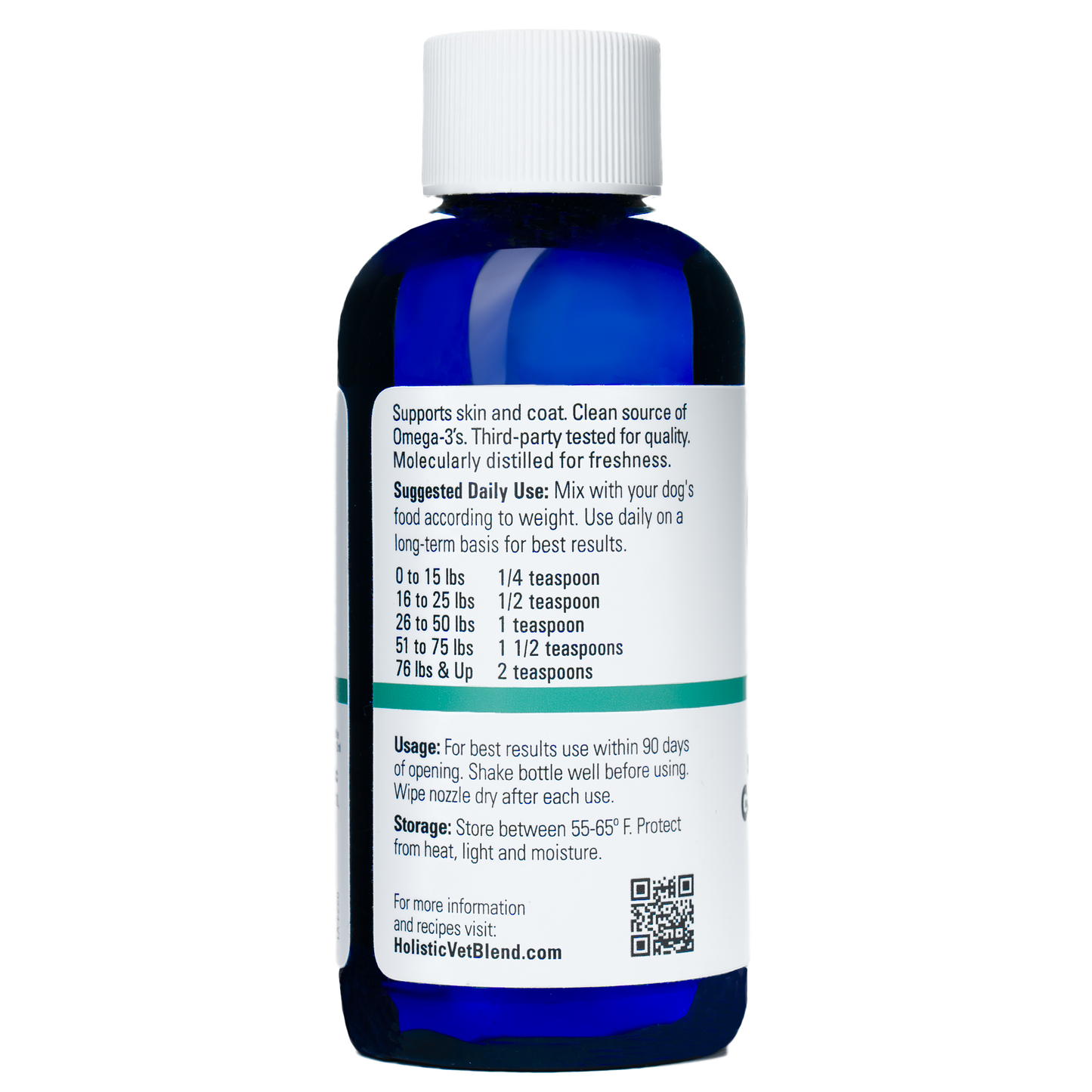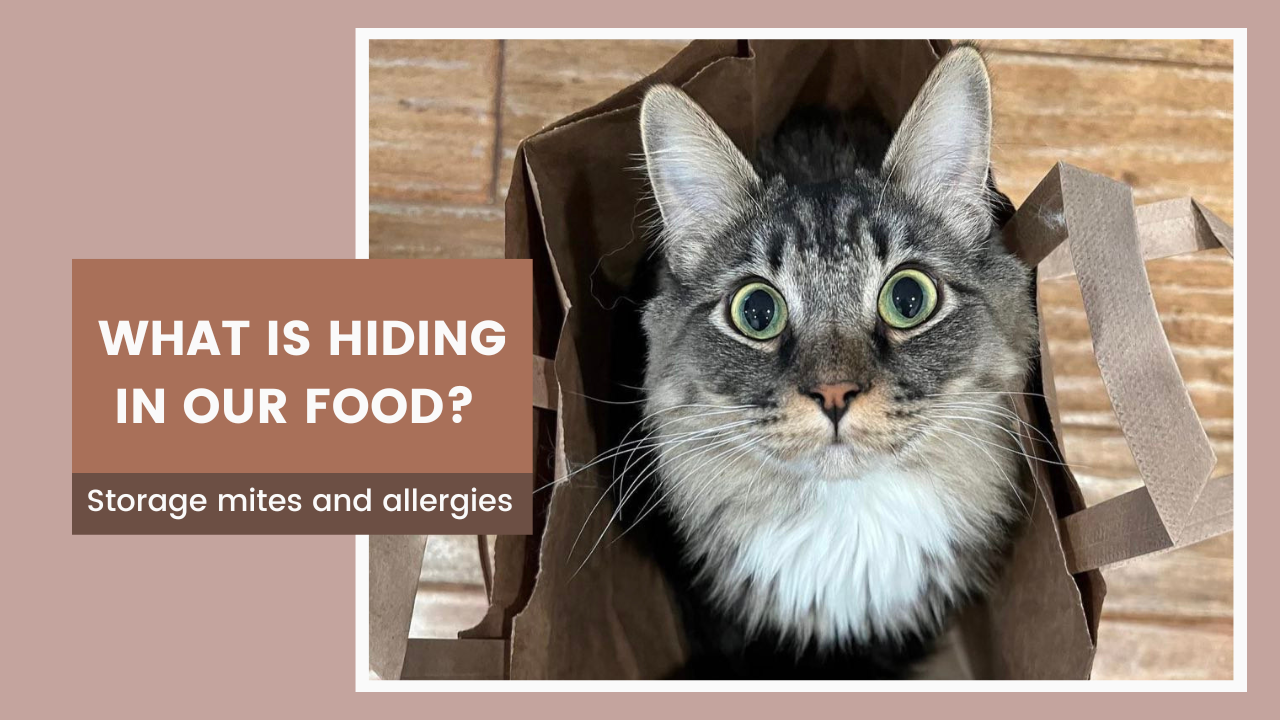
In this blog post, we are going to address a little-known culprit that lurks in dry dog or cat food, flour, grains, dried fruits, and cereal. They can actually cause symptoms that can mistakenly get your pet diagnosed as a food allergy or even a respiratory allergy. These little aliens are known as storage mites, and they just might be lurking in your pantry!
Even if you or your pet do not have allergies, it behooves you to know how to prevent food storage mites from taking up the house in your pantry. In this blog post, we will explore what storage mites are, how they differ from dust mites, where they are commonly found, how to test for this type of allergy, and the most effective treatment strategies. We will also provide useful tips on preventing storage mites from growing in pet storage containers and maintaining the freshness of dry pet food.

What are Storage Mites? How do They Differ from Dust Mites?
Storage mites, particularly Tyrophagus putrescentiae, are tiny arachnids that can multiply on protein- and fat-rich pet foods. Unlike the dust mites, they thrive in household dust, storage mites infest and contaminate stored dry pet food. These mites, along with their body parts and feces, can trigger allergic reactions in dogs, often leading to atopic dermatitis and other skin conditions. Both mite species are not visible to the naked eye and are a common allergen that is overlooked.
What are signs that you or your pet are having a reaction to food storage mites?

- Excessive itching and scratching: Dogs and cats with storage mite allergies may exhibit persistent itching and hair loss. On physical examination, you may see redness, irritation, and even skin infections if left untreated.
- Frequent sneezing or coughing: Respiratory symptoms are common in pets with storage and dust mite allergies.
- Watery or irritated eyes: Redness, swelling, and watery discharge from the eyes can indicate an allergic response to storage mites.
- Digestive issues: Some pets may experience gastrointestinal symptoms such as vomiting or diarrhea as a result of storage mite allergies. These symptoms can occur if the allergens are ingested through contaminated food or bedding.
- Chronic ear infections: Dogs and cats with storage mite allergies may also develop recurring ear infections.

Common Sources of Storage Mites in Human and Dog Foods

Pets are commonly exposed to storage mites through ingestion or inhalation when consuming contaminated foods. Storage mites can infest both human and dog foods, especially those that are rich in protein and fat. It is important to note that while humans may not typically show symptoms of an allergic reaction to storage mites, their presence in the environment can pose a risk to sensitive dogs.
Testing for Storage Mite Allergy
A diet trial with a home-cooked diet or a canned wet food versus feeding dry dog food is one way to eliminate storage mite allergies.
If you suspect that your dog may be allergic to storage mites, consult with a veterinarian who can perform specific tests to confirm the diagnosis. These may include skin allergy testing or blood tests to detect specific antibodies against storage mites. Accurate diagnosis is crucial for implementing the appropriate treatment plan.

Treatment of Storage Mite Allergy
While storage mite allergy in dogs can be distressing, there are various treatment options available. These may include:
- A diet trial with home-cooked ingredients unlikely to have mite contamination is another option.
- Allergen-specific immunotherapy: This involves administering gradually increasing doses of the allergen to build immunity.
- Medications: Antihistamines, corticosteroids, and immune-modulating drugs can help manage symptoms.
- Environmental control: Minimizing exposure to storage mites by maintaining a clean living environment and using hypoallergenic bedding and pet food containers.
It is important to note that the success of treatment varies depending on the individual dog's response and the severity of the allergy. Consult with your veterinarian to determine the most suitable approach for your pet.
Preventing Storage Mites in Pet Storage Containers

To prevent storage mites from growing in pet storage containers, follow these tips:
- Choose airtight containers: Opt for tightly sealed containers specifically designed for dry pet foods
- Store in a cool, dry place: Avoid storing pet food in humid areas, as high moisture levels can promote storage mites.
- Regularly clean containers: Empty the container completely and wash it with hot water. You can use dish soap and follow up with soaking the container in dilute bleach. A dilution of 1 cup bleach per gallon will also kill mold in the container. Rinse and thoroughly dry it before refilling it with fresh food.
- Use food within expiration dates: Pay attention to the expiration dates on dry pet food packaging. Using food before it expires reduces the risk of mite infestation and maintains its nutritional quality.
Expiration Dates and Storage Practices
Dry pet food typically comes with an expiration date printed on the packaging. It is crucial to adhere to these dates to ensure optimal freshness and nutritional value. Once a bag of dry food is opened, it should ideally be consumed within a certain timeframe, typically within 4-6 weeks. Another approach is freezing dog food you know your pet will not consume in this timeframe.

Conclusion
By understanding the risks associated with storage mite contamination in food, we can take proactive measures to not attract storage mites in our pantry. Regularly cleaning pet food storage containers, storing food in low temperature and humidity, and closely monitoring expiration dates are essential practices to minimize the risk of mite infestation. If you suspect your dog may be allergic to storage mites, consult with a veterinary dermatologist for accurate diagnosis and tailored treatment options. With proper care and preventive measures, we can create a safe and comfortable environment for our beloved pets.

Watch the YouTube Shorts about this topic to learn more
about storage mites and how to keep your pet safe!

